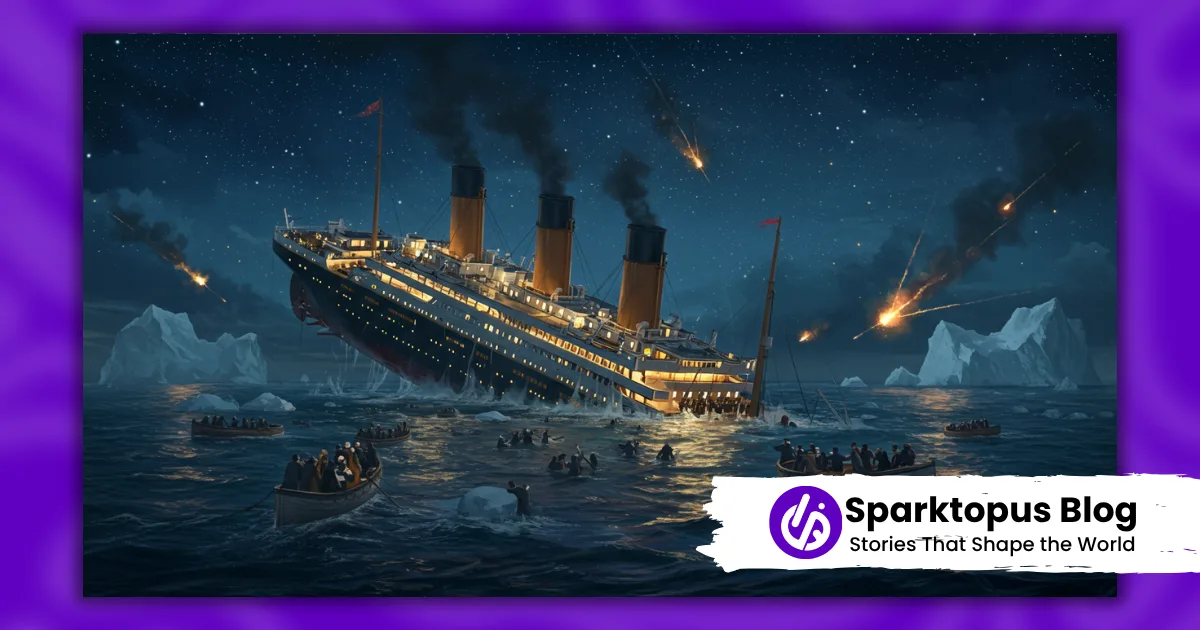
The sinking of the RMS Titanic remains one of the most enduring and captivating stories of the 20th century. Over a century later, this maritime disaster still fascinates millions worldwide, inspiring books, films, documentaries, and research. But beyond the myth and Hollywood dramatization lies the real story of the Titanic sinking — a tale of human error, tragic circumstances, technological hubris, and heroism.
1. The Titanic: A Marvel of Its Time
Launched on May 31, 1911, the RMS Titanic was hailed as the largest, most luxurious, and technologically advanced ocean liner of its era. Built by the Harland and Wolff shipyard in Belfast, Northern Ireland, it was owned by the White Star Line and designed to offer unprecedented comfort to its passengers.
Titanic’s Design and Innovations
Size and Scale: At 882 feet long and 92 feet wide, the Titanic was a floating palace with 16 watertight compartments designed to prevent sinking.
“Unsinkable” Reputation: The ship was promoted as virtually unsinkable due to its compartmentalized hull.
Luxury: The ship had lavish first-class accommodations, complete with grand staircases, swimming pools, gyms, and fine dining.
However, despite its grandeur, Titanic’s story would end in tragedy less than two weeks after its maiden voyage began.
2. The Maiden Voyage and the Collision
On April 10, 1912, the Titanic departed Southampton, England, bound for New York City. It carried 2,224 passengers and crew, including some of the wealthiest people in the world and hundreds of emigrants seeking a new life in America.
The Iceberg Warning Ignored
During the voyage, the Titanic received multiple iceberg warnings from other ships. However, these warnings were either underestimated or not relayed effectively to the captain.
The Night of the Collision
April 14, 1912: At approximately 11:40 p.m., the Titanic struck an iceberg in the North Atlantic.
The collision caused a 300-foot-long gash below the waterline, flooding five of the ship’s watertight compartments.
The ship’s design allowed it to stay afloat with up to four compartments flooded, but five were fatal.
3. Why Did the Titanic Sink So Quickly?
Despite its “unsinkable” status, the Titanic sank in less than three hours after the collision. Several factors contributed to the rapid sinking:
Watertight Compartments Not Fully Sealed: The bulkheads between compartments did not extend high enough to contain water as it spilled over.
Insufficient Lifeboats: The Titanic carried only 20 lifeboats, enough for about 1,178 people, less than half the number on board.
Delayed Evacuation: Lifeboats were launched partially empty due to poor crew training and a lack of clear instructions.
High Speed: Titanic was traveling near maximum speed despite iceberg warnings, limiting reaction time.
4. The Human Stories: Heroism and Tragedy
The sinking of the Titanic was a human drama played out against the backdrop of disaster.
Acts of Bravery
Captain Edward Smith: Stayed on the bridge until the end, going down with the ship.
Crew and Passengers: Many crew members and passengers helped others to safety, sometimes sacrificing themselves.
The Band: The ship’s musicians famously continued to play music to calm passengers as the ship sank.
Stories of Survival and Loss
Over 1,500 people lost their lives in the icy waters.
Some survived by clinging to debris or being rescued from lifeboats.
Survival rates varied drastically by class, with first-class passengers having a higher chance of survival than third-class passengers due to access and proximity to lifeboats.
5. The Aftermath: Investigations and Changes
The Titanic disaster shocked the world and led to major changes in maritime safety.
Official Inquiries
Both British and American governments conducted investigations.
They identified critical safety failures, including inadequate lifeboat requirements and poor communication.
Changes in Maritime Safety
The International Convention for the Safety of Life at Sea (SOLAS) was established in 1914.
Requirements for lifeboat capacity were increased.
Ice patrols were created to monitor iceberg threats in the North Atlantic.
Radio communication was mandated 24/7 on passenger ships.
6. Common Myths and Misconceptions
The Titanic story has been romanticized and mythologized over time. Let’s clear up some common misconceptions:
Myth: The Titanic was truly “unsinkable.”
The term was more marketing hype than fact, based on assumptions about watertight compartments.Myth: The ship broke in half as it sank.
Evidence from the wreck shows the Titanic broke into two pieces before sinking, contrary to early reports that it went down intact.Myth: The Californian was nearby and ignored distress signals.
The SS Californian was close but did not respond properly to Titanic’s distress calls, an issue still debated by historians.
7. The Discovery of the Wreck
The Titanic sank to the ocean floor at a depth of about 12,500 feet. It remained lost for over 70 years.
1985: Oceanographer Robert Ballard and his team discovered the wreck.
The discovery revealed the ship broken into two major pieces with a debris field spread over miles.
Artifacts recovered have given insights into the ship’s construction, the disaster, and the lives of its passengers.
8. Titanic in Popular Culture
Titanic’s story has been immortalized in films, literature, museums, and exhibitions.
James Cameron’s 1997 film Titanic brought the story to a new generation, combining romance with historical tragedy.
Museums like the Titanic Belfast and the Titanic Museum Attraction in the U.S. offer immersive experiences.
The story remains a potent symbol of human ambition, error, and resilience.
Conclusion: Remembering Titanic’s Legacy
The real story of the Titanic sinking is more than a tale of an iceberg collision; it’s a complex narrative about human ingenuity, hubris, tragedy, and heroism. The sinking of the Titanic fundamentally changed maritime safety and continues to remind us of the importance of preparedness, respect for nature, and the fragility of life.
For history buffs, maritime enthusiasts, and the general public, the story of the Titanic remains a compelling chapter in human history—one that we must never forget. You may also like to read: The 7 Forgotten Empires of Africa.
Reference: Sinking of the Titanic.
Never miss an update! Click the notification bell icon to allow post notifications and follow us @SparktopusBlog on all social media to stay updated!








